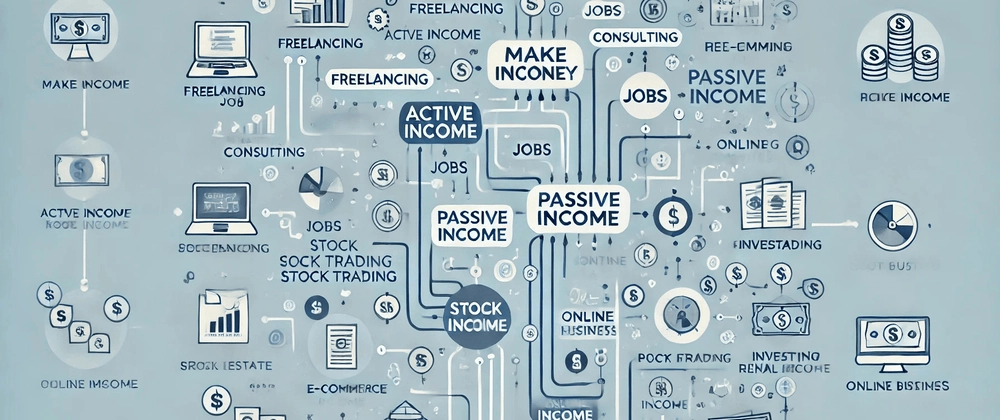Understanding the Basics of Blockchain Development
Blockchain technology has revolutionized the way we think about data security, decentralization, and digital transactions. Whether you're a web developer looking to expand your skillset or an entrepreneur exploring decentralized applications (dApps), understanding blockchain development is a valuable asset.
In this guide, we'll break down the fundamentals of blockchain, explore key development concepts, and provide practical code snippets to get you started. And if you're looking to monetize your web development expertise, consider checking out MillionFormula for opportunities to turn your skills into income.
What Is Blockchain?
At its core, a blockchain is a distributed ledger that records transactions across a network of computers. Unlike traditional databases, blockchains are:
- Decentralized – No single entity controls the data.
- Immutable – Once recorded, transactions cannot be altered.
- Transparent – All participants can verify transactions.
Popular blockchains include Bitcoin (for digital currency) and Ethereum (for smart contracts and dApps).
Core Concepts in Blockchain Development
1. Blocks and Chains
A blockchain consists of blocks linked cryptographically. Each block contains:
- A list of transactions
- A timestamp
- A hash (a unique identifier)
- The hash of the previous block (creating the "chain")
Here’s a simplified Python representation of a block:
python
Copy
import hashlib import json from time import time class Block: def __init__(self, index, transactions, previous_hash): self.index = index self.transactions = transactions self.timestamp = time() self.previous_hash = previous_hash self.hash = self.compute_hash() def compute_hash(self): block_string = json.dumps(self.__dict__, sort_keys=True) return hashlib.sha256(block_string.encode()).hexdigest()
2. Consensus Mechanisms
Blockchains rely on consensus algorithms to validate transactions. The two most common are:
- Proof of Work (PoW) – Used by Bitcoin, requires miners to solve complex puzzles.
- Proof of Stake (PoS) – Used by Ethereum 2.0, validators stake cryptocurrency to participate.
3. Smart Contracts
Smart contracts are self-executing agreements written in code. Ethereum uses Solidity, a programming language specifically for smart contracts.
Example Solidity smart contract:
solidity
Copy
// SPDX-License-Identifier: MIT pragma solidity ^0.8.0; contract SimpleStorage { uint storedData; function set(uint x) public { storedData = x; } function get() public view returns (uint) { return storedData; } }
4. Decentralized Applications (dApps)
dApps run on blockchain networks instead of centralized servers. Popular frameworks for dApp development include:
- Truffle Suite (Ethereum development)
- Hardhat (Ethereum tooling)
- Web3.js (JavaScript library for Ethereum)
Getting Started with Blockchain Development
Step 1: Set Up a Development Environment
To write and test smart contracts, you’ll need:
- Node.js (Download here)
- Ganache (Local blockchain for testing, Download here)
- MetaMask (Browser wallet, Install here)
Step 2: Deploy a Smart Contract
Using Hardhat, you can compile and deploy a smart contract:
- Install Hardhat:
bash
Copy
npm install --save-dev hardhat npx hardhat init
- Deploy the contract:
javascript
Copy
const hre = require("hardhat"); async function main() { const SimpleStorage = await hre.ethers.getContractFactory("SimpleStorage"); const simpleStorage = await SimpleStorage.deploy(); await simpleStorage.deployed(); console.log("Contract deployed to:", simpleStorage.address); } main().catch((error) => { console.error(error); process.exit(1); });
Step 3: Interact with the Blockchain
Using Web3.js, you can connect to Ethereum and interact with smart contracts:
javascript
Copy
const Web3 = require('web3'); const web3 = new Web3('https://mainnet.infura.io/v3/YOUR_INFURA_KEY'); // Get latest block number web3.eth.getBlockNumber().then(console.log);
Why Learn Blockchain Development?
- High Demand – Blockchain developers are among the highest-paid in tech.
- Future-Proof Skills – Decentralized tech is growing in finance, supply chain, and more.
- Entrepreneurial Opportunities – Build your own dApps or consult for blockchain startups.
If you're a web developer looking to monetize your skills beyond blockchain, MillionFormula offers strategies to generate income from your expertise.
Conclusion
Blockchain development is an exciting field with endless possibilities. By understanding the basics—blocks, consensus mechanisms, smart contracts, and dApps—you can start building decentralized solutions.
Ready to dive deeper? Check out these resources:
Happy coding, and may your blockchain journey be as immutable as the ledger itself! 🚀



Top comments (0)